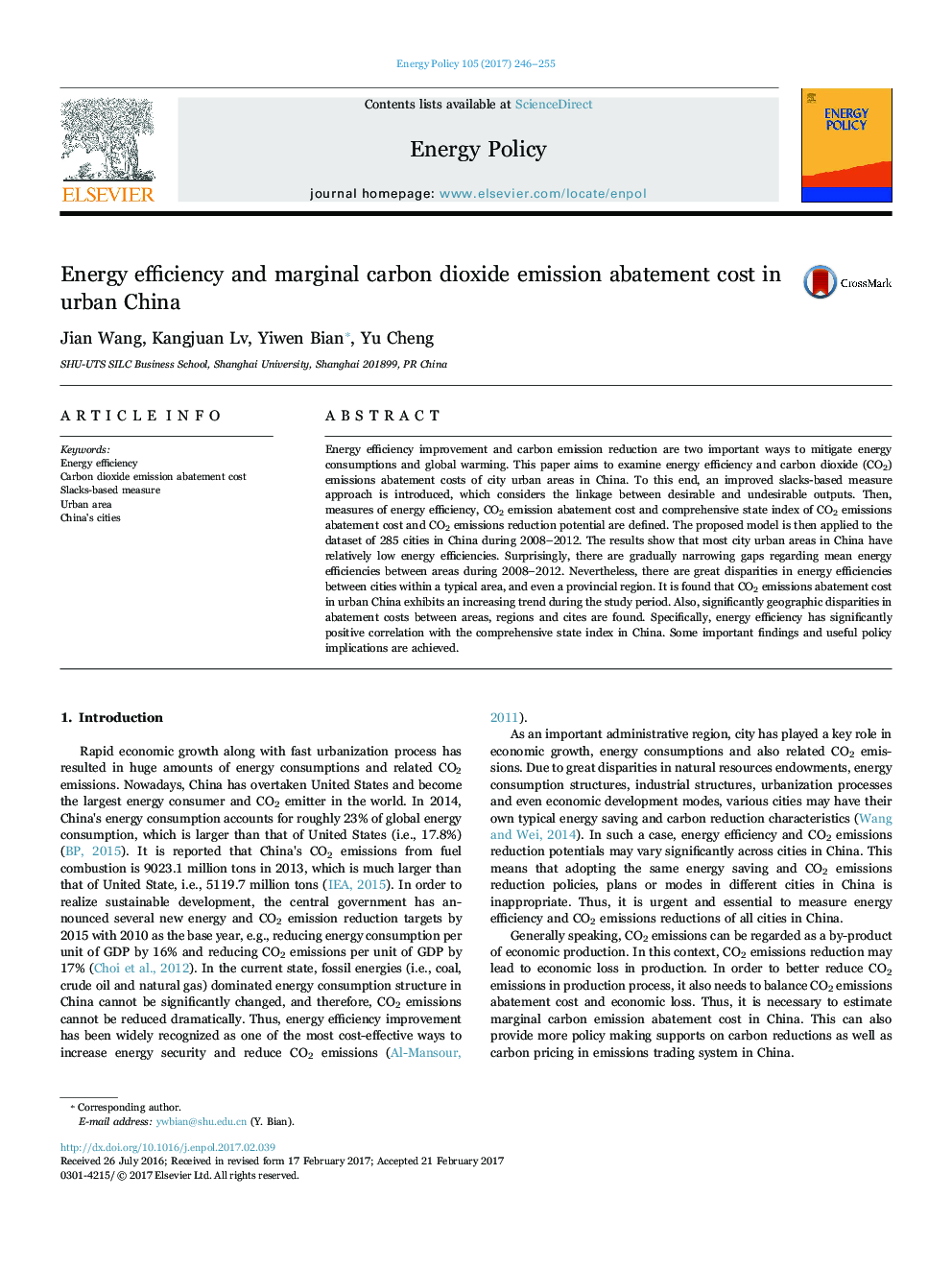| Article ID | Journal | Published Year | Pages | File Type |
|---|---|---|---|---|
| 5105905 | Energy Policy | 2017 | 10 Pages |
Abstract
Energy efficiency improvement and carbon emission reduction are two important ways to mitigate energy consumptions and global warming. This paper aims to examine energy efficiency and carbon dioxide (CO2) emissions abatement costs of city urban areas in China. To this end, an improved slacks-based measure approach is introduced, which considers the linkage between desirable and undesirable outputs. Then, measures of energy efficiency, CO2 emission abatement cost and comprehensive state index of CO2 emissions abatement cost and CO2 emissions reduction potential are defined. The proposed model is then applied to the dataset of 285 cities in China during 2008-2012. The results show that most city urban areas in China have relatively low energy efficiencies. Surprisingly, there are gradually narrowing gaps regarding mean energy efficiencies between areas during 2008-2012. Nevertheless, there are great disparities in energy efficiencies between cities within a typical area, and even a provincial region. It is found that CO2 emissions abatement cost in urban China exhibits an increasing trend during the study period. Also, significantly geographic disparities in abatement costs between areas, regions and cites are found. Specifically, energy efficiency has significantly positive correlation with the comprehensive state index in China. Some important findings and useful policy implications are achieved.
Related Topics
Physical Sciences and Engineering
Energy
Energy Engineering and Power Technology
Authors
Jian Wang, Kangjuan Lv, Yiwen Bian, Yu Cheng,
